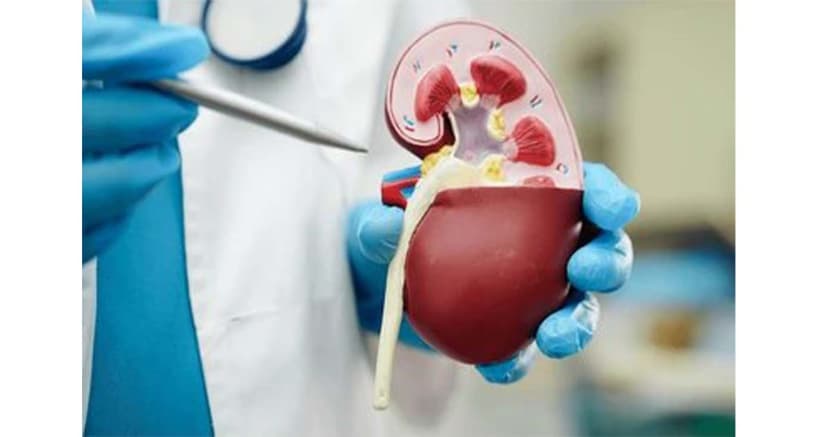Say Goodbye to Pain: Effective Back and Neck Relief Techniques
By:

Apex Hospitals
11-07-2024

Back and neck pain can be debilitating, disrupting your daily routine and making even simple tasks challenging. The causes of this discomfort vary, but they often stem from poor posture whether while standing, moving, or, most critically, sitting.
When left unaddressed, neck and back pain can escalate, further restricting your movement and capabilities. It’s a common problem, with eight out of ten people experiencing back or neck pain at some point.
Acute pain, which is sudden and intense, typically fades within days or weeks. However, some individuals face persistent pain that lingers despite various treatments, both nonsurgical and surgical. This ongoing discomfort is known as chronic pain, and it requires a different approach to manage effectively.
In this blog, we’ll explore a range of proven techniques designed to help you say goodbye to back and neck pain for good. From simple lifestyle adjustments to advanced treatment options, these strategies will empower you to reclaim your comfort and enjoy a pain-free life.
What are the causes of back and neck pain?
Despite technological advances, pinpointing the exact cause of back and neck pain remains challenging. In many cases, these types of pain can stem from a variety of factors, including:
- Overuse, strenuous activity, or improper use, such as repetitive twisting or heavy lifting
- Trauma, injury, or fractures
- Degeneration of vertebrae, often due to the stresses placed on the supporting muscles and ligaments of the spine or as a result of ageing
- Infections
- Abnormal growths, like tumours or bone spurs
- Obesity, which adds extra weight to the spine and increases pressure on the disks
- Poor muscle tone or weakness in the back and abdominal muscles
- Muscle tension or spasms
- Sprains or strains
- Tears in ligaments or muscles
- Joint issues, such as arthritis
- Smoking
- Slipped or herniated disks and pinched nerves
- Osteoporosis and compression fractures
- Congenital problems with the vertebrae and bones
- Abdominal issues, such as an aortic aneurysm
Back and Neck pain relief techniques
1. Use heat and cold as suggested by the doctor
Both hot and cold packs can effectively alleviate swelling and soothe pain.
Cold packs are typically used right after an injury. Applying an ice pack wrapped in a towel directly to the affected area reduces inflammation. Cold therapy can also numb sudden, intense back pain. You can use specially designed cold packs or even a bag of ice or frozen vegetables wrapped in a towel to protect your skin from frostbite. It’s recommended by the Arthritis Foundation to limit the use of ice packs to a maximum of 20 minutes at a time.
On the other hand, a heat pad can relieve a sore back by increasing blood flow and promoting healing. It’s essential to follow the instructions carefully to avoid burns. Heat pads can deliver quick comfort, but if you don’t have one, alternatives like a hot water bottle or a cloth bag filled with uncooked rice and heated in the microwave can be used.
2. Try over-the-counter pain relief medicines.
Nonsteroidal anti-inflammatory drugs (NSAIDs) like ibuprofen can help reduce inflammation and pain in the short term. Always consult with a healthcare provider before starting any medication.
3. Massage
Regular massages can relieve muscle tension, improve circulation, and promote relaxation, helping to alleviate back and neck pain.
4. Stretching and Flexibility Exercises
Regular stretching can help relieve muscle tension and improve flexibility, reducing the risk of injury and pain. Focus on stretches that target the neck, shoulders, and lower back.
5. Proper Posture
Maintaining good posture while sitting, standing, and moving is crucial for preventing and alleviating pain. Keep your back straight shoulders relaxed, and avoid slouching to reduce pressure on the spine.
6. Don’t stop moving
Research suggests that gentle movement of muscles and joints is more effective for treating simple back pain than passive approaches like rest and medication. While limiting activity initially is crucial, as the pain subsides, it's important to gradually increase your range of motion beyond the initial point of discomfort. Simple exercises aid in this recovery process. Still, it's essential to consult with your healthcare provider or a back specialist to determine the most appropriate exercise program for your specific needs.
7. Get enough sleep
Studies suggest that prolonged poor sleep quality can elevate the risk of developing chronic back pain. To improve sleep posture, individuals might find it helpful to place a pillow under their knees while lying on their back. It's advisable to avoid sleeping on the stomach. For those who prefer sleeping on their side, placing a pillow between the knees can help maintain proper spinal alignment.
When to see a doctor
If you’re experiencing persistent or severe back and neck pain that doesn’t improve with self-care, it’s crucial to consult a doctor. Signs that you should seek medical attention include pain lasting more than a few weeks, radiating pain into the arms or legs, neurological symptoms like numbness or weakness, recent injury or trauma, and associated systemic symptoms such as unexplained weight loss or fever. At Apex Hospitals, our team of experts is ready to provide a thorough evaluation and personalized treatment plan to address your pain effectively. Don’t wait for your discomfort to worsen book your appointment now and let us help you find the relief you need.
FAQS
Related Articles
Connect With Us
Health In A Snap, Just One App.
KNOW MORE
























































































































































